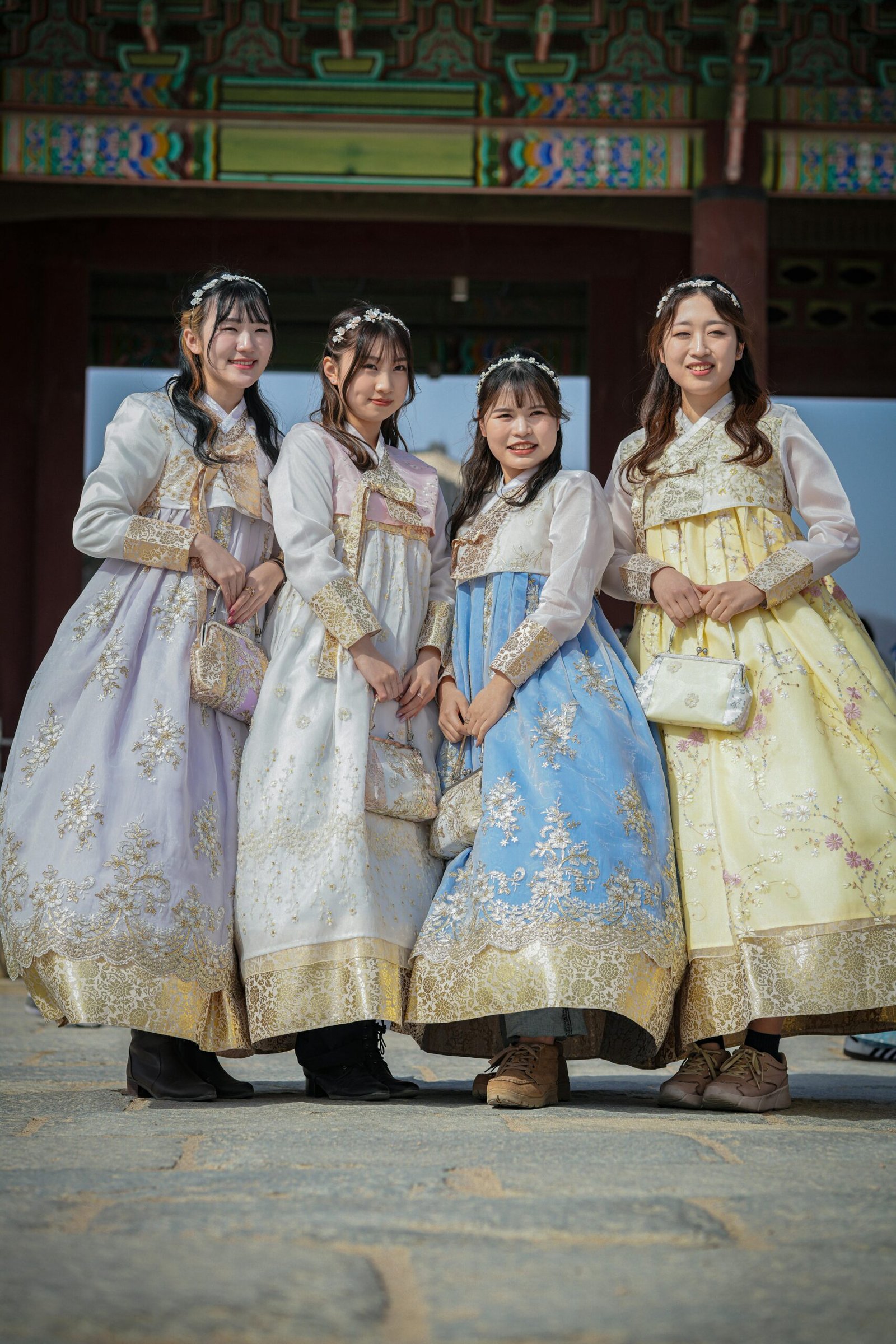In the fascinating world of Korean cuisine, many traditional dishes have undergone delightful transformations, blending age-old recipes with modern twists. You’ll discover how beloved classics like Kimchi and Bibimbap retain their cultural roots while adapting to contemporary tastes and ingredients. This culinary journey uncovers the evolution of these dishes, revealing how they’ve been reimagined in various ways, yet still hold the essence of Korea’s rich gastronomic heritage. Dive in and explore the vibrant stories behind these timeless meals! Have you ever wondered how traditional Korean dishes have evolved over time? Korean cuisine, deeply rooted in ancient traditions and cultural practices, has gone through a fascinating transformation. With globalization and regional influences, these beloved dishes have adapted to modern tastes while still maintaining their authentic flair. In this article, we’ll explore some traditional Korean dishes that have not only stood the test of time but have also undergone remarkable evolution.

The Significance of Korean Cuisine
Before diving into the evolution of specific dishes, let’s understand the significance of Korean cuisine. Korean food is characterized by bold flavors, healthy ingredients, and a harmonious mix of tastes and textures. It is a vital part of Korean culture, often seen as a way to bring families and communities together. The historical backdrop of Korea, with its agricultural roots and periods of war and hardship, has shaped the way its culinary techniques and ingredients have developed.
Kimchi: Beyond Just Fermentation
The Traditional Kimchi
Kimchi is arguably the most iconic Korean dish known worldwide. Traditionally, kimchi is made from fermented Napa cabbage, radishes, and a mixture of chili pepper, garlic, ginger, and salted seafood. This dish has been a staple in Korean households for centuries, primarily as a means to preserve vegetables for the harsh winters.
The Evolution of Kimchi
While the basic concept of fermented vegetables remains consistent, the modern variations of kimchi are plentiful.
| Modern Variations | Description |
|---|---|
| White Kimchi | A non-spicy version without red chili pepper flakes. |
| Geotjeori | A lightly seasoned kimchi, not fully fermented. |
| Fruit Kimchi | Includes fruits like apples or pears for sweetness. |
| Fusion Kimchi | Incorporates Western ingredients such as cheese. |
These variations not only reflect a shift towards diverse tastes but also show the adaptability of this ancient dish to contemporary preferences.
Bulgogi: From Royal Courts to Modern Tables
The Traditional Bulgogi
Traditionally, Bulgogi is a marinated beef dish that was consumed by the Korean royalty. It is known for its rich, savory flavor and tender texture, achieved through marinating thin slices of beef in a sauce made with soy sauce, sugar, sesame oil, garlic, and other seasonings.
The Evolution of Bulgogi
Bulgogi has evolved in recipes, cooking methods, and the types of meat used.
| Variations | Description |
|---|---|
| Pork Bulgogi | Uses pork instead of beef, often with a spicier marinade. |
| Chicken Bulgogi | A poultry version with similar seasonings. |
| Vegetarian Bulgogi | Utilizes tofu or mushrooms as a meat substitute. |
| Bulgogi Tacos | A fusion dish that combines Korean Bulgogi with Mexican tacos. |
These adaptations reflect both the influence of globalization and changing dietary preferences.
Bibimbap: A Culinary Art Form
The Traditional Bibimbap
Bibimbap, which translates to “mixed rice,” is a quintessential Korean dish that consists of rice topped with various vegetables, beef, a fried egg, and gochujang (chili pepper paste). This dish symbolizes the harmony of flavors and nutrients.
The Evolution of Bibimbap
Over the years, bibimbap has diversified into several variations, each bringing its unique twist to the traditional recipe.
| Variations | Description |
|---|---|
| Dolsot Bibimbap | Served in a hot stone pot, making the rice crispy. |
| Hoedeopbap | Incorporates raw fish, similar to a Japanese donburi. |
| Vegetarian Bibimbap | Uses an array of colorful vegetables, omitting meat. |
| Fusion Bibimbap | Features ingredients like quinoa and avocado. |
This versatile dish continues to adapt, offering endless possibilities for personal customization.

Tteokbokki: From Street Food to Gourmet Delicacy
The Traditional Tteokbokki
Tteokbokki is a popular street food made from chewy rice cakes cooked in a spicy gochujang-based sauce. It originally served as a royal dish during the Joseon Dynasty, before becoming the beloved comfort food found in street markets today.
The Evolution of Tteokbokki
Tteokbokki has transformed from simple street food to a gourmet delicacy with a range of variations.
| Variations | Description |
|---|---|
| Cream Tteokbokki | A creamy, non-spicy version often using cheese. |
| Seafood Tteokbokki | Incorporates various seafood like shrimp and squid. |
| Fusion Tteokbokki | Integrates Western elements like pasta and different types of cheese. |
These variations highlight the dish’s adaptability and continuous evolution, making it accessible to a broader audience.
Gimbap: The Korean Sushi Roll
The Traditional Gimbap
Gimbap, often compared to sushi, consists of rice and a variety of fillings like vegetables, eggs, and meat, all rolled in dried seaweed. It is a favorite for picnics and lunch boxes in Korea.
The Evolution of Gimbap
Modern gimbap has seen numerous innovations, enhancing both flavor and presentation.
| Variations | Description |
|---|---|
| Bulgogi Gimbap | Includes marinated beef bulgogi as a filling. |
| Tuna Gimbap | Uses canned tuna mixed with mayonnaise. |
| Vegetable Gimbap | Focuses on a variety of fresh and pickled vegetables. |
| Fish Roe Gimbap | Contains fish roe for added texture and flavor. |
These evolving versions illustrate the dish’s versatility and adaptability to new culinary trends.

Jeon: The Korean Pancake
The Traditional Jeon
Jeon is the term for Korean pancakes made from a batter of eggs, wheat flour, rice flour, and a variety of ingredients like vegetables, meat, or seafood. It is a popular snack and is often served during traditional holidays.
The Evolution of Jeon
Like other Korean dishes, jeon has also evolved, with various types now available to cater to different tastes.
| Variations | Description |
|---|---|
| Kimchi Jeon | Incorporates kimchi for a tangy flavor. |
| Haemul Pajeon | Features a mix of seafood. |
| Potato Jeon | Includes grated potatoes for a different texture. |
| Fusion Jeon | Combines ingredients like cheese or Western vegetables. |
These variations ensure that jeon remains a beloved dish in contemporary Korean cuisine.
Soondubu Jjigae: The Silken Tofu Stew
The Traditional Soondubu Jjigae
Soondubu Jjigae is a spicy stew made with soft tofu, vegetables, and often seafood or meat. It is known for its rich, comforting broth and is typically served bubbling hot.
The Evolution of Soondubu Jjigae
This dish has also seen various adaptations, influenced by both regional tastes and global ingredients.
| Variations | Description |
|---|---|
| Seafood Soondubu | Contains an assortment of seafood like clams and shrimp. |
| Beef Soondubu | Uses thin slices of beef for extra richness. |
| Vegetarian Soondubu | Focuses on mushrooms and other vegetables. |
| Fusion Soondubu | Incorporates non-traditional ingredients like cheese or cream. |
These diverse versions show that the essence of Soondubu Jjigae can be maintained while exploring new flavors.

Samgyeopsal: The Korean BBQ Delight
The Traditional Samgyeopsal
Samgyeopsal, or grilled pork belly, is a staple in Korean BBQ. Traditionally, it is served with various side dishes (banchan), lettuce wraps, and dipping sauces like ssamjang.
The Evolution of Samgyeopsal
With the rise of Korean BBQ globally, Samgyeopsal has also seen several intriguing twists.
| Variations | Description |
|---|---|
| Marinated Samgyeopsal | Uses special marinades for added flavor. |
| Spicy Samgyeopsal | Includes gochujang or other chili-based marinades. |
| Western Fusion | Served with non-traditional sides like mashed potatoes. |
| Kimchi Samgyeopsal | Includes kimchi directly on the grill. |
The versatility of this dish ensures its lasting popularity both in Korea and internationally.
Japchae: The Savory Noodles
The Traditional Japchae
Japchae, made from glass noodles (dangmyeon) and a mix of vegetables, beef, and eggs, is a dish often reserved for special occasions. Its savory flavor and smooth texture make it a favorite.
The Evolution of Japchae
Modern variations of Japchae reflect the dish’s adaptability to different culinary trends.
| Variations | Description |
|---|---|
| Vegetarian Japchae | Focuses on a variety of colorful vegetables. |
| Spicy Japchae | Adds a kick with spicy sauces or peppers. |
| Seafood Japchae | Incorporates seafood like shrimp or scallops. |
| Fusion Japchae | Features non-traditional elements like basil or cheese. |
These variations highlight Japchae’s enduring appeal and its adaptability to modern tastes.

The Modern Influence on Traditional Korean Cuisine
The evolution of Korean food is heavily influenced by globalization, health trends, and the desire for convenience without compromising on flavor. Social media and food blogging have also played significant roles in introducing and popularizing these dishes globally. Koreans living abroad have contributed to the fusion of traditional Korean cuisine with local flavors and ingredients.
Key Factors Influencing Evolution:
- Globalization: Exposure to foreign cuisines and ingredients has encouraged experimentation.
- Health Trends: An increasing focus on health has led to more vegetarian and vegan options.
- Convenience: Ready-to-eat versions and simplified recipes cater to busy lifestyles.
- Culinary Creativity: Chefs and home cooks constantly experiment to keep dishes exciting and relevant.
Conclusion: The Future of Korean Cuisine
Traditional Korean dishes have not just survived but thrived by evolving over time. The adaptability and innovation seen in these beloved dishes ensure their relevance in both Korean and global kitchens. Whether you prefer traditional flavors or innovative twists, Korean cuisine offers a rich tapestry of tastes and experiences.
So, the next time you savor a bite of kimchi or enjoy a steaming bowl of Soondubu Jjigae, take a moment to appreciate the journey these dishes have taken to reach your plate. The evolution of Korean cuisine is a testament to its resilience and enduring appeal.
We hope you’ve enjoyed this culinary journey through the evolution of traditional Korean dishes. Now, go ahead and explore these delicious variations yourself—you might just discover a new favorite!
There you have it! An in-depth look at how traditional Korean dishes have evolved over time. Feel free to share your own experiences or any new variations you’ve come across. Happy eating!
